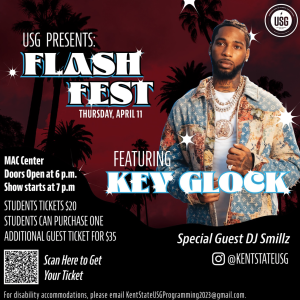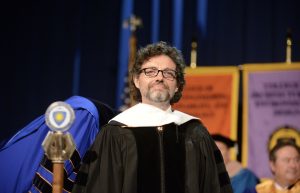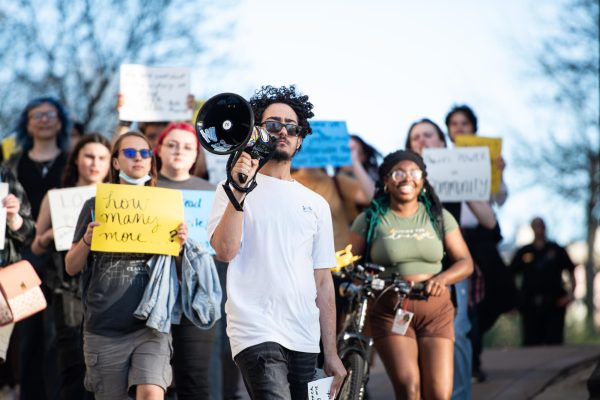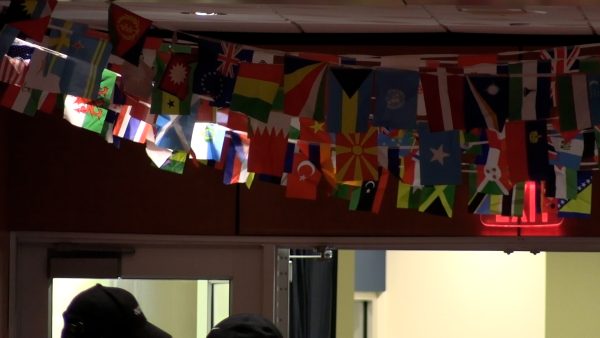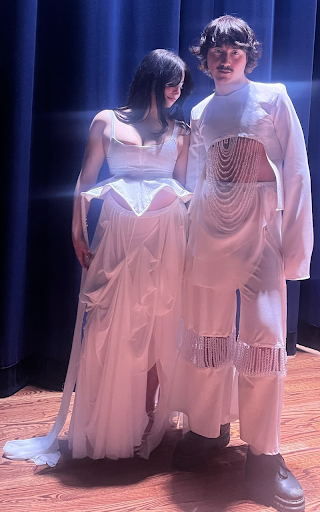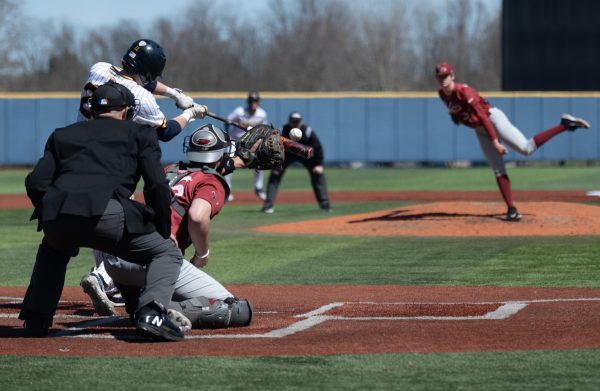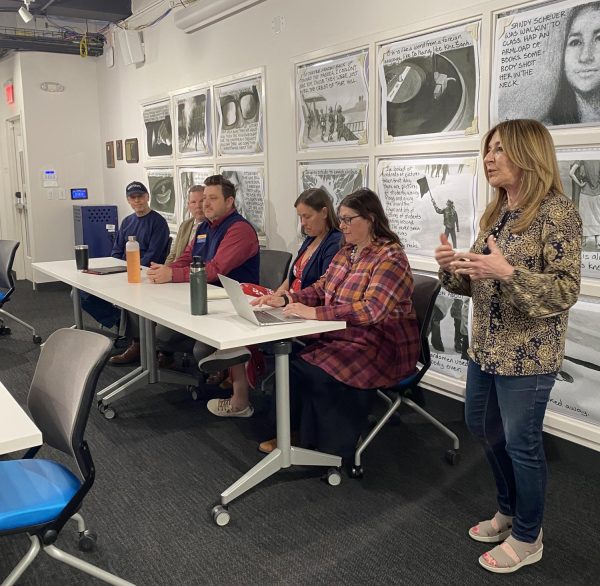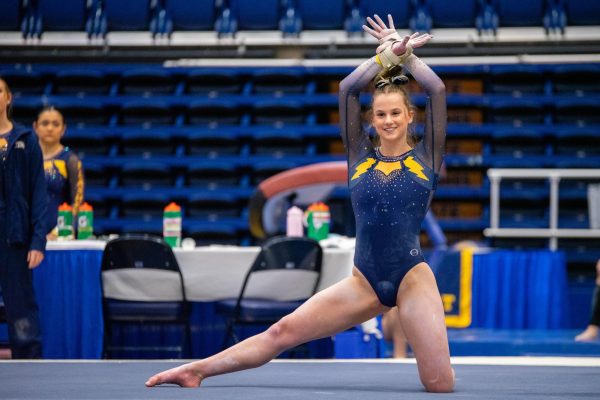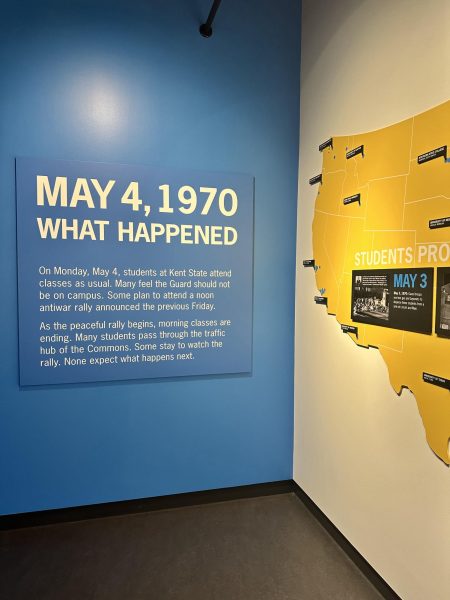Goalball comes to Kent
October 29, 2008
New sport allows athletes to compete by using their ears
Supervisor Joey Campbell gets ready to roll the ball in an attempt to score, while supervisor Grant Deppen lays waiting for the next ball to save. Shaye A. Painter | Daily Kent Stater
Credit: DKS Editors
It’s a mixture of dodgeball, soccer and volleyball. Athletes try to block the ball from entering the goal. The catch? All players are blindfolded.
They listen for the rattle of the bells that are within the ball and feel for the rope that makes up the goal’s boundaries. This is what a participant of Goalball must do to achieve victory.
| Paralympic Games The Paralympic Games are a multi-sport event for athletes with physical and sensorial disabilities. This includes athletes with mobility disabilities, amputations, blindness or cerebral palsy. The Paralympic Games are held two weeks after the Olympic Games in the same city as the regular Olympics.
The Paralympic Games are sometimes confused with the Special Olympics World Games, which are only for people with intellectual disabilities, but Special Olympics participants may still take part in the Paralympic Games. Goalball and Boccia are considered summer sports. China won the gold medal in men’s Goalball at this year’s 2008 Paralympic Games. |
In an effort to provide intramural sport opportunities for students of all abilities, the Student and Recreation Wellness Center is offering adaptive team sports, the first being Goalball.
“We are trying to reach the whole population of Kent State, and by offering these sports, it is a way of doing so,” said John Krehnovi, intramural sports and community leagues coordinator for the Student Recreation and Wellness Center.
Goalball, a team sport designed for blind athletes, was introduced this fall. Goalball was added as a new intramural sport, but was also being offered as an event in conjunction with disAbility Awareness Month.
| United State Blind Athletes Association The United States Association of Blind Athletes (USABA) is a community-based organization of the United States Olympic Committee. Its mission is to “enhance the lives of blind and visually impaired people by providing the opportunity for participation in sports and physical activity.”
USABA members include more than 3,000 athletes who compete in nine sports, Goalball being one of them. The United States has a men’s and women’s Goalball team that competes at each Paralympic Games. |
Goalball is played on an indoor volleyball court. Each team consists of three players, with a maximum of three substitutes. The objective of the game is for each team to roll the ball and score a goal, while the opposing players try to block the ball with any part of their body. The goal is 30 feet wide – the width of the volleyball court. The winner is the team that scores the most goals. A game is played in two halves of 10 minutes each. Players are blindfolded regardless if they are blind or not.
Goalball is a Paralympic sport played by athletes who are blind and visually impaired. An Austrian named Hanz Lorenzen and German named Sepp Reindle invented it in 1946, as an effort to help in the rehabilitation of blinded World War II veterans. Goalball was introduced to the world in 1976 at the Paralympic Games in Toronto and has been played at every Paralympic Games since.
The newly introduced Goalball doesn’t currently have anyone signed up to play this semester, but Krehnovi hopes that the interest in the sport increases so he can offer it again next fall.
“As of right now, we are trying to work more with Student Accessibility Services to get more of an idea of what they want and what students want,” Krehnovi said.
Sue Smith, editorial communication associate for Student Accessibility Services, said the process for developing Goalball started when someone mentioned a game called beep ball, which is the same concept, only it’s softball for the blind. Smith also said another important reason for introducing Goalball was that it requires fewer players, which makes it easier to pull together.
Krehnovi said he is in the developing stages of offering another sport in the spring called indoor Boccia, which is like bocce ball but played indoors on a basketball court. It is geared toward people in wheelchairs.
Boccia became a Paralympic sport for athletes with cerebral palsy at the New York Paralympic Games in 1984.
Krehnovi said he is also exploring other adaptive sports that are more expensive, such as power soccer, which is soccer played by people in power wheelchairs, and wheelchair basketball.
Students of all abilities are able to participate in the adaptive sports. Those interested can contact John Krehnovi at 330-672-0460.
Contact student affairs reporter Ashten Haswell at [email protected].








